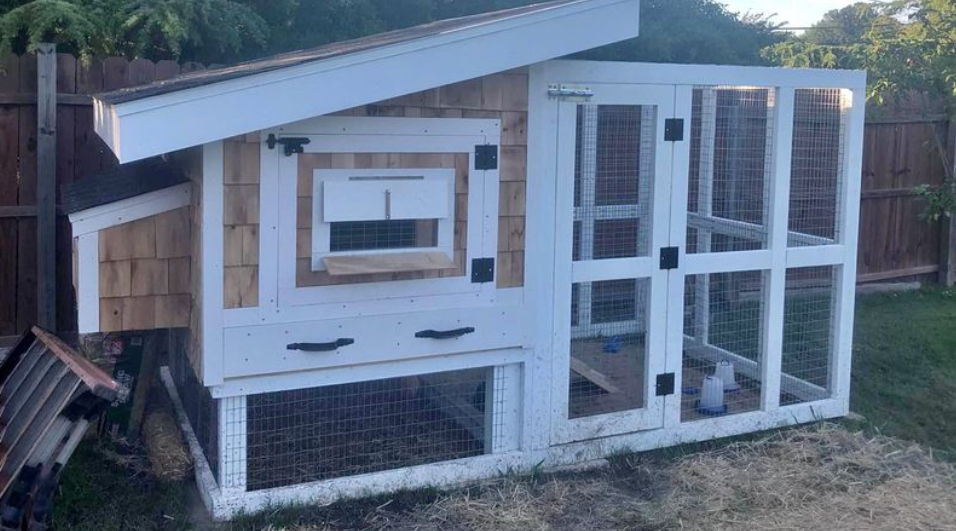Choosing the Right Size Chicken Coop: Factors to Consider and Tips for Maximizing Space

A properly sized coop provides enough space for the chickens to move, roost, and engage in natural behaviors. It also ensures that they have adequate ventilation, lighting, and nesting areas. By considering various factors, you can determine the ideal size for your chicken coop.
Factors to Consider
1. Number of Chickens
A general guideline is to provide 3-4 square feet of space per chicken inside the coop. However, if the chickens will have access to an outdoor run during the day, you can reduce the indoor space to 2-3 square feet per chicken. Having more space per chicken allows for better ventilation and reduces the risk of overcrowding and disease. Consider the long-term plans for your flock and allow room for future expansion if needed.
2. Breed of Chickens
Different chicken breeds have different space requirements. Large breeds, such as Orpingtons or Brahmas, generally require more space compared to smaller breeds like bantams. Consider the adult size of the breed and provide enough space for them to stretch their wings and move comfortably. Research the specific breed's recommendations for coop size to ensure you meet their needs. Some breeds are more active and may require additional space for exercise and entertainment.
3. Chicken Activities
Chicken activities, such as foraging, dust bathing, and perching, require additional space. Allocate space for a run or an outdoor area where the chickens can engage in these activities.
Provide perches at different heights to satisfy their natural instinct to roost. Incorporate areas for dust bathing, such as a shallow box filled with sand or loose soil. Consider adding enrichment items like toys or branches for the chickens to explore and peck at.
Consequences of Incorrect Size
If the coop is too small, the chickens may become stressed, aggressive, or develop behavioral issues. Overcrowding can lead to increased competition for resources, such as food and water.
Poor ventilation in a small coop can result in respiratory problems and higher humidity levels. Insufficient space may lead to feather picking, cannibalism, or other harmful behaviors. Chickens in cramped conditions are also more prone to diseases, parasites, and injuries.
Regulations and Guidelines
Check with your local authorities or neighborhood associations for any regulations or guidelines regarding chicken coop size. Some areas may have specific requirements on the minimum distance between coops and property lines. Complying with regulations ensures that you are a responsible chicken owner and maintains harmony with your neighbors. Research any zoning restrictions or permits required before constructing or expanding a chicken coop. Consider the visual impact of the coop and its compatibility with the surrounding environment.
Tips for Maximizing Space
Here are some tips for maximizing space in a small chicken coop:
- Use vertical space by incorporating multi-level roosts or stacking nesting boxes.
- Install foldable or swing-out nesting boxes to save space when not in use.
- Use hanging feeders and waterers to free up floor space.
- Utilize removable or collapsible panels to create flexible spaces within the coop.
- Consider using a chicken tractor or portable coop to provide fresh forage areas and rotate the chickens across your yard.
| Key Sizes and Numbers | |
|---|---|
| Chicken Coop Size | 3 to 5 sq ft per chicken |
| Chicken Run Size | 10 sq ft per chicken |
| Bantam Chicken Coop Size | 2 sq ft per bantam |
| Number of Eggs | 3-5 eggs per week on average |
| Number of Nesting Boxes | one box for every 3 to 4 hens |
Estimating Coop Size
To estimate the size of a chicken coop, calculate the required space based on the number of chickens and the recommended square footage per chicken. For example, if you have 6 chickens and the guideline is 4 square feet per chicken, you will need a coop of at least 24 square feet. Factor in the space needed for activities, perches, nesting boxes, and feeders. Consider the space requirements of your chosen breed and any future expansion plans. It's better to build a slightly larger coop than to underestimate the space needed.
Conclusion
Consider the number of chickens, breed requirements, and their activities when determining the size. Ensure compliance with any local regulations and use space-maximizing techniques to enhance the environment for your chickens to thrive.






